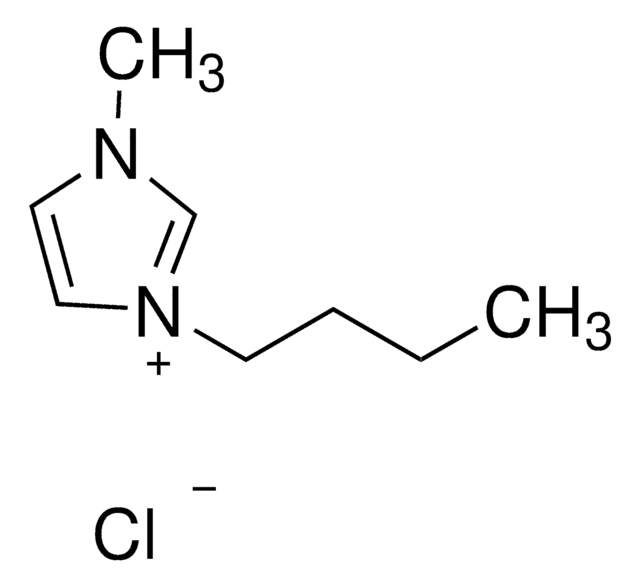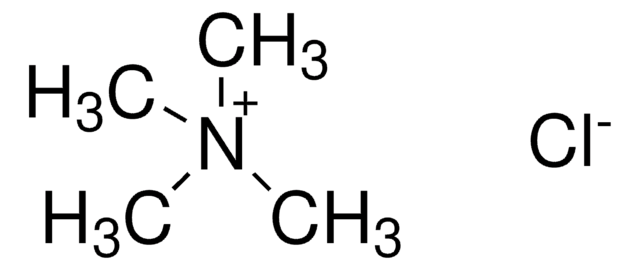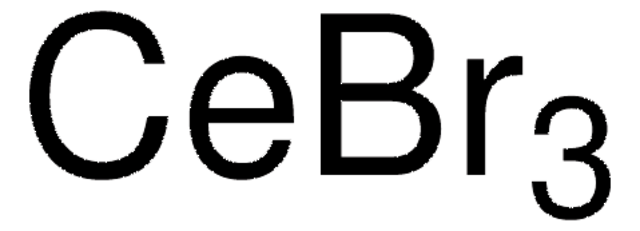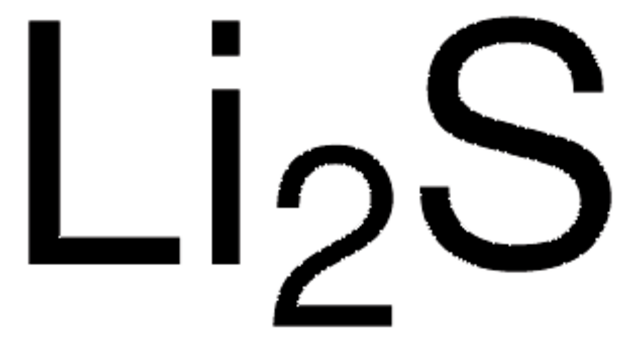429465
Lithiumbromid
AnhydroBeads™, −10 mesh, 99.999% trace metals basis
Synonym(e):
Lithium monobromide
About This Item
Empfohlene Produkte
Produktlinie
AnhydroBeads™
Qualitätsniveau
Assay
99.999% trace metals basis
Form
beads
Verunreinigungen
≤15.0 ppm Trace Metal Analysis
Partikelgröße
−10 mesh
mp (Schmelzpunkt)
550 °C (lit.)
SMILES String
[Li+].[Br-]
InChI
1S/BrH.Li/h1H;/q;+1/p-1
InChIKey
AMXOYNBUYSYVKV-UHFFFAOYSA-M
Suchen Sie nach ähnlichen Produkten? Aufrufen Leitfaden zum Produktvergleich
Allgemeine Beschreibung
Anwendung
- An electrolyte additive for lithium-sulfur batteries to enhance their rate performance and cycling stability.
- To prepare poly (vinyl alcohol) (PVA) fibers. The addition of LiBr improves the mechanical properties of the polymer fibers.
- To fabricate a surface passivation layer for silicon solar cells to enhance photoluminescence intensity.
Rechtliche Hinweise
Zubehör
Signalwort
Warning
H-Sätze
Gefahreneinstufungen
Acute Tox. 4 Oral - Eye Irrit. 2 - Skin Irrit. 2 - Skin Sens. 1
Lagerklassenschlüssel
13 - Non Combustible Solids
WGK
WGK 1
Flammpunkt (°F)
Not applicable
Flammpunkt (°C)
Not applicable
Hier finden Sie alle aktuellen Versionen:
Besitzen Sie dieses Produkt bereits?
In der Dokumentenbibliothek finden Sie die Dokumentation zu den Produkten, die Sie kürzlich erworben haben.
Kunden haben sich ebenfalls angesehen
Artikel
Research and development of solid-state lithium fast-ion conductors is crucial because they can be potentially used as solid electrolytes in all-solid-state batteries, which may solve the safety and energy-density related issues of conventional lithium-ion batteries that use liquid (farmable organic) electrolytes.
Unser Team von Wissenschaftlern verfügt über Erfahrung in allen Forschungsbereichen einschließlich Life Science, Materialwissenschaften, chemischer Synthese, Chromatographie, Analytik und vielen mehr..
Setzen Sie sich mit dem technischen Dienst in Verbindung.









